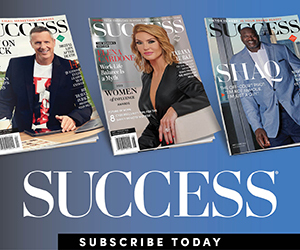Ian Little was the Secretary of the Victorian Department for Treasury and Finance when he died suddenly in 2006. At the time, I was a 20-something just barely out of university, one with the kind of undeserved confidence that many 20-somethings often seem to have in spades.
When Little died, there was an outpouring of grief amongst his colleagues. He had been at the helm of our organization for eight years. Before that, he was a well-respected and experienced professional across the public and private sectors, having worked for Australia’s Reserve Bank and ANZ bank.
As a junior policy analyst, I hadn’t had much to do with Little. Yet I remember him even now, some 17 years on, because he taught me two of the most valuable lessons of my life without even knowing my name.
Consider the opportunity cost
The first was the 80/20 rule. Little was fond of saying that it didn’t matter how perfect a written briefing was if it was late. Get it 80% of the way there and get it in on time. The marginal benefits of the last 20% counted less than timeliness.
Little was a stickler for getting things right, but he was always focused on opportunity costs. A brief that missed a deadline was worse than a brief with slightly imperfect grammar (though imperfect calculations were a different matter). Little wasn’t one to cut corners. In fact, as one of his colleagues, former Treasury secretary Ken Henry, Ph.D., put it, “Ian wasn’t motivated by the adrenalin rush of the quick-fix. For him, problems worth worrying about had a strategic dimension. They demanded a long hard look, an evidence-based analytical crunch, and their solutions demanded painstaking implementation.” But Little always recognized the inherent value and cost in tackling any opportunity. The 80/20 rule was just one way he measured them.
Using the opportunity cost theory to measure energy spent
That rule has stayed with me since then, personally and professionally, in the way I measure and value who and what I put my energy into.
There’s an opportunity cost in everything that we do, whether it’s writing a document, making school lunches or going on a holiday. In fact, there is one opportunity cost that is common to every single thing we do at work and at home. It’s known colloquially as time. The one thing we never get back.
Of course, being successful requires hard work, as well as a fair dose of luck and timing. Success comes in various guises and forms depending on what you hope to achieve. Often, you have to have an inherent level of intelligence, too, though emotional intelligence can be just as critically important. But there’s no question in my mind that the people who are the most successful tend to be best at assessing opportunity costs. It makes sense that Little, the head of a government department responsible for assessing financial risks and opportunities on a daily basis, would understand this better than anyone.
It’s important to be kind
The second lesson that Little taught me was about humility. My closest encounter with Little was on Christmas Eve one year, just before the annual family morning tea to which staff could bring family members.
I had a new puppy at the time. Though I knew that dogs weren’t allowed in the building, I had managed to sneak past security with my puppy hidden in a large handbag. I was feeling pretty smug. Wasn’t I clever bringing my “child” to the morning tea! As I got out of the elevator onto my floor, I opened the bag and let the puppy poke its head out. And as I turned the corner, I almost literally bumped into Little. He could have told me to remove the dog from the building immediately. He could have used his power to shame me. Or he could have just ignored me. Who was I after all? Instead, he smiled, said, “Merry Christmas,” and walked on.
It’s all well and good to be 100% right, but there’s an opportunity gain far more significant in being kind. Treasury departments are not generally warm and fuzzy environments. It’s pretty much all number crunching and sarcasm. So when you are the head of an organization known only half-jokingly as “the dark side,” sincere kindness is an even more impressive quality to role models.
Nearly 20 years later, I still remember this man. Little taught me that 80% of the time, being a leader at work is about getting the work done in the most efficient way through persistence, vision and with an eye toward the opportunity costs of every decision. But at least 20% of the time, being a leader at work requires you to just be a good person, starting with being kind to the overconfident 20-something who is watching you. And who will remember.
This article was updated April 2023. Photo by Jacob Lund/Shutterstock




